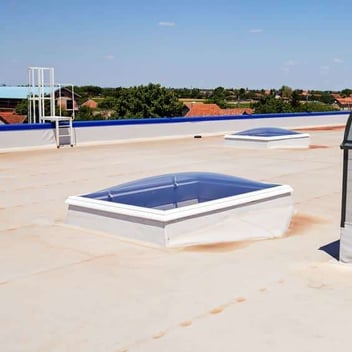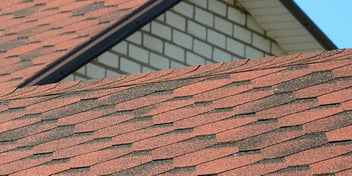- Home »
- Learningcenter »
- Black roof shingles hotter
FAQ: Do Black Roof Shingles Make a Building Interior Hotter?

Around the world, air conditioners and electric fans account for nearly 20% of all the electricity used in buildings. You can do several things to keep your cooling costs down during the summer, including regularly changing your air filters, investing in a programmable thermostat, and replacing your old system with an energy-efficient one.
At the same time, your roof can play a big part in how warm the interior of your home or building is during the summer. There are a number of factors at play here, including the quality of your roofing material, the type of material, and the efficacy of your roof ventilation system.
Another factor that impacts how hot your building gets is the color of your roof shingles. Black roof shingles are typically going to absorb more heat than lighter-colored shingles.
At the same time, the roofing industry has come a long way in recent years to help make classic black shingles more energy-efficient. Let’s look at everything you need to know about shingle color and home temperature so you can decide what best fits your needs and budget.
Does the Color of Your Roof Impact Your Home’s Temperature?
How hot the interior of your home or building gets during the hot summer months can be impacted by the color of your roof. However, the color of your roof is only one of the factors that can affect the temperature of your structure.
In general, darker roofs will absorb heat, while lighter roofs will absorb less heat.
This means that having a black roof on your home can require you to use your cooling system more often in the summer. Not only can this increase your energy bills, but it can also put more strain on your system.
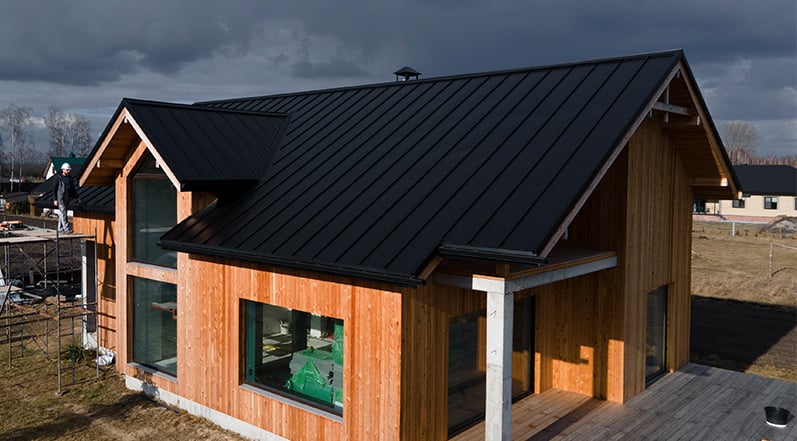
On the other hand, lighter-colored roofs can help reduce how much you spend on cooling your home in the summer and lighten the burden on your air conditioning system.
During the winter, however, a darker-colored roof will help to keep your building warmer because it will absorb heat from the sun. If you live in a particularly cold climate, you might find that you are able to save more money annually by helping to keep your home warm in the winter rather than working to keep it cool during the summer using the color of your roof.
Will Your Building Be Hotter If You Have Black Shingles?
Black shingles and other black roofing materials will absorb the most heat out of all of the roof color options. At the same time, black is still one of the most popular colors for roofing materials. This is because black roofs create a modern and clean aesthetic while more effectively hiding blemishes.
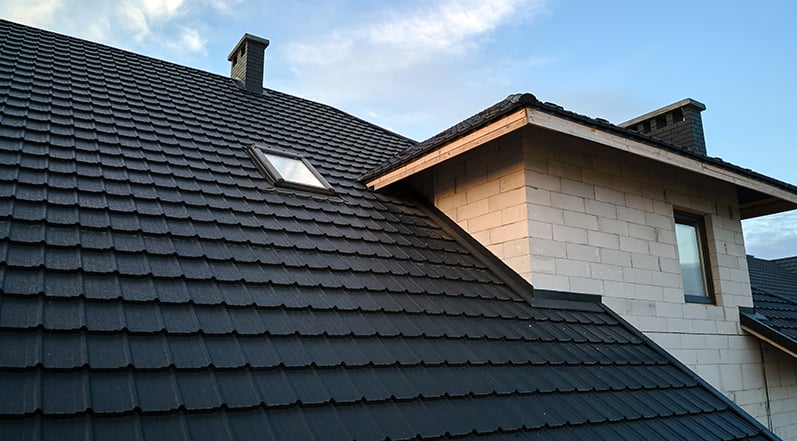
Additionally, the roofing industry has made great strides when it comes to helping to negate the impact that black roofs can have on the interior temperature of a building. Beyond that, a number of factors influence how hot a building gets in the summer and how cold it gets in the winter, so you don’t want to only consider roof color in isolation.
What Other Factors Impact Roof Temperature?
Beyond the color of your shingles, there are a number of factors you’ll want to consider when thinking about how best to keep your home’s temperature comfortable.
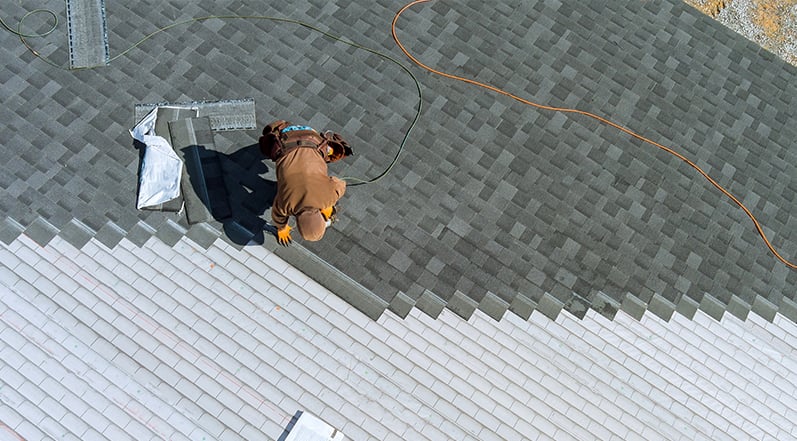
Some of these other factors include:
- ● The local climate
- ● The position of your roof in relation to the sun
- ● The roofing materials used
- ● The build quality of the roofing system
- ● Tree cover on your property
- ● The quality of your ventilation system
- ● The number of hours your roof receives direct overhead sun exposure
How Does Roof Material Affect the Temperature of Your Home?
In addition to the color of your roof, you’ll also want to consider your roofing material when you are considering how to keep your home cool in the summer. Depending on the material you use on your roof, more or less heat from the sun will be absorbed and contribute to your home’s temperature.
Asphalt Roofs
Asphalt shingles are by far the most popular choice when it comes to residential roofs in the United States. In fact, about three-quarters of the homes in the U.S. have asphalt shingles on their roof.
There are a number of reasons why this material is so widely used, including the fact that it is affordable and durable. That being said, there can be a great deal of variety when it comes to how energy-efficient asphalt shingles are.
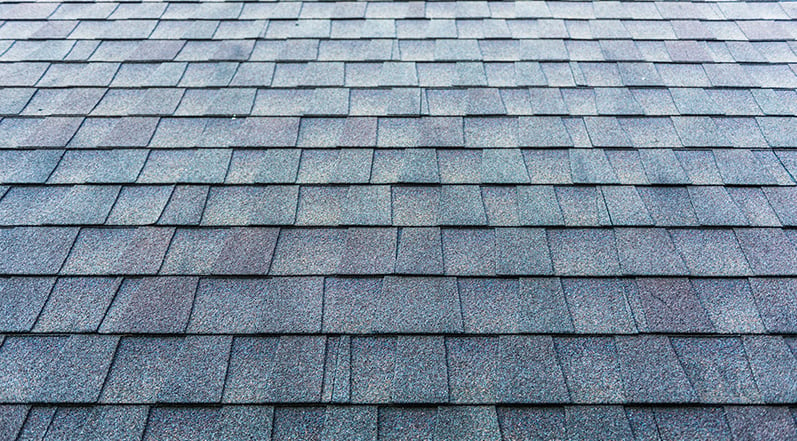
Some high-quality asphalt shingles are specifically designed to be more energy efficient. This can make a noticeable difference in one’s energy bills. Beyond that, asphalt shingles are now available in a number of lighter-colored options, which can mean that your roof will absorb less heat that ends up inside your building’s interior.
When shopping for shingles, you might be curious to know what longevity ratings really mean for the durability of your roof. Take a look at our recent post about the difference between 20, 30, 40, and 50-year shingles to learn more.
Metal Roofs
There are a number of pros and cons to metal roofs, as with all roofing materials. One of the advantages is that they have a high reflectivity rating and are naturally capable of dissipating heat. In fact, metal roofs can potentially reduce your air conditioning costs by up to 25%, according to researchers with the U.S. Department of Energy.
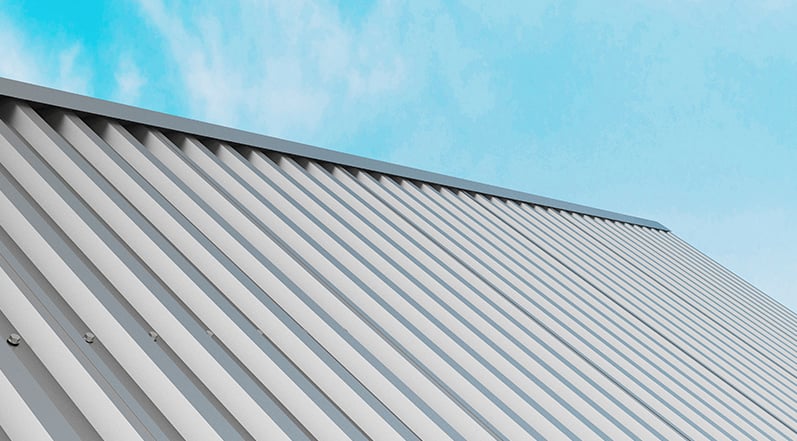
The color of a metal roof will also have an effect on how much heat is absorbed– lighter-colored metal roofs are known to be more energy-efficient than metal roofs in dark colors.
Composite Roofs
Also known as synthetic roofing, composite roofs are often designed to look like slate roofing. There are a wide variety of options for composite roofs, and there are varieties designed to be more energy-efficient.

Additionally, choosing lighter color composite roofing shingles can help reduce the amount of heat your roof absorbs.
What Is a Reflectivity Rating?
The reflectivity rating of a roof is a metric that illustrates how capable a roof is of reflecting the rays of the sun rather than absorbing them. A higher reflectivity rating indicates that a roof is better at reflecting heat from the sun and, therefore, not transferring heat to your home during the summer.

Lighter-colored roofs (such as white, light tan, and light gray) typically have higher reflectivity ratings if all materials are equal. There are a number of different factors to consider when you’re deciding how to make your roof as energy efficient as possible beyond its reflectivity rating, but understanding the material’s ability to reflect rather than absorb the sun’s rays can be a good place to begin.
How to Keep a Home With Black Shingles Cool
If you are eager to keep your home as cool as possible during the summer, you might think this means you have to get lighter-colored roofing shingles. While white, tan, or gray shingles won’t absorb as much of the sun’s rays during the warmer months, you can employ several strategies to keep a home with a black roof cool.
Shingle Quality and Type
There can be a huge range when it comes to the quality of different shingles, and quality will directly impact the energy efficiency and durability of your roof. 3-tab and architectural shingles are the two most common types of shingles, but you’ll likely want to choose an architectural shingle if you are motivated to keep your cooling costs down and get the most bang for your buck over the life of the roof.
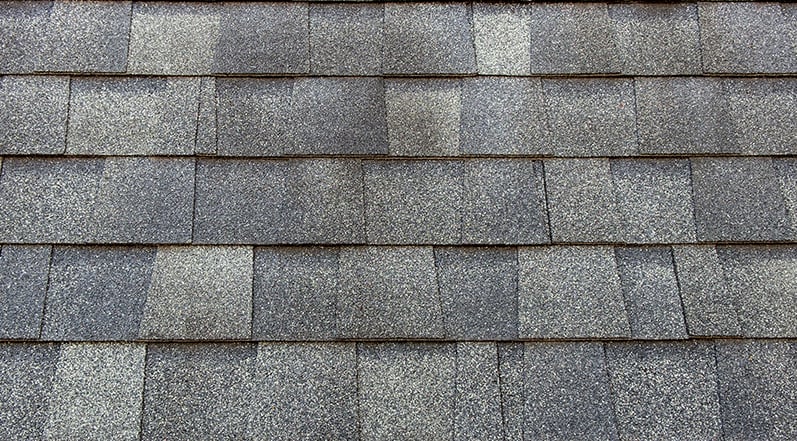
If you live in the Peach State, you might be wondering what the best type of shingle is for your home. Make sure you take a look at our post about the pros and cons of each type of shingle for homes in Georgia.
Ventilation
The health of your home and your roof requires that you have proper roof ventilation. This is particularly true if you have black shingles. Properly installed inflow and outflow sources are required in order to ensure that air is circulating and your home and roof stay as cool as possible.
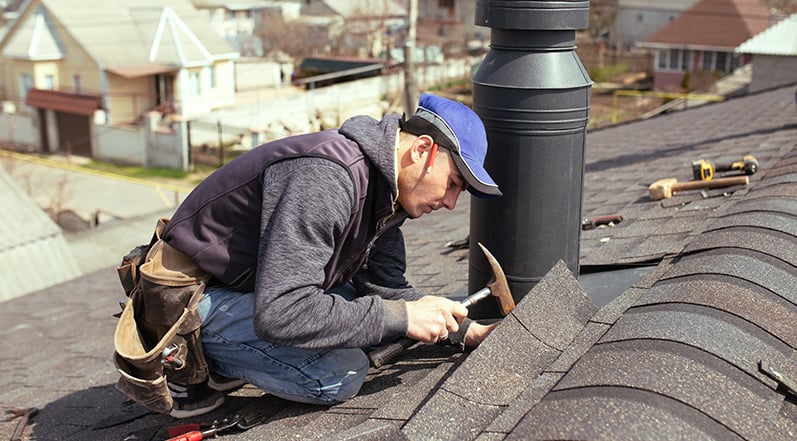
If your roof isn’t ventilated adequately, a number of issues can crop up. Beyond increased energy bills, these can include increased moisture and humidity in the attic, ice dams in the winter, mold, and damage to the structural components of your roof.
Synthetic Roof Underlayment
Not terribly long ago, roofing companies would install underlayments such as felt paper or tar paper. A number of issues could emerge from using this type of material as an underlayment, such as causing shingle and water damage as well as attracting heat in a home with black shingles.
These days, the industry has changed. Roofers use synthetic underlayment when they are installing asphalt shingles. This underlayment material is far better at withstanding strong winds and debris, resisting water, and keeping the roof cool.
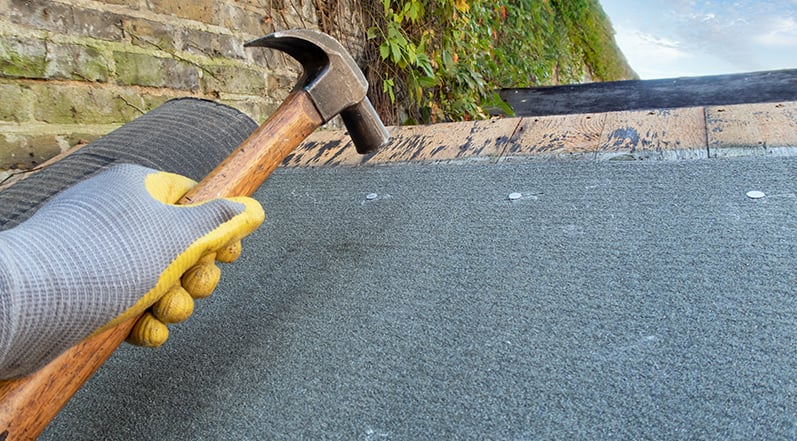
Depending on the age of your roof, the underlayment may be made using one of these less effective materials.
Will Black Shingles Increase Energy Bills?
The answer to this question depends on which climate you live in and how much you typically spend on your energy bills in both the summer and the winter. For people living in a cold climate, black shingles could be the more energy-efficient option because they help keep a home warm during the cold winter months.
In northern climates, the burden of heating bills is often greater than the cost of cooling a home during the summer. Therefore, a roof more inclined to absorb heat can be the more energy-efficient choice.

On the other hand, homes in a humid subtropical climate like Atlanta would likely benefit from a cool roof or energy-efficient roof as cooling costs are more significant than heating costs.
Should You Install a Cool Roof on Your Home?
You can enjoy immediate and long-term benefits when you replace your roof with a roofing system that will stay cool even in the sun’s heat. Studies have found that cool roofs can help to reduce annual air conditioning energy use by up to 15% in single-story buildings, which can add up to some serious savings on your cooling bill. Beyond that, homes without air conditioning can stay much more comfortable with a cool roof during warmer months.
Since there has been increasing interest in cool roofs, a wide variety of cool color and white roofing products are available for both steep-slope and low-slope roofs. On top of having color options, most traditional roofing materials now offer “cool” options.

Of course, if you have a relatively new roof that is in great condition, it probably isn’t the best financial decision to replace your roof with a cool roof in order to boost your roofing system’s solar reflectivity. However, if you are expecting to replace your roof in the near future, it’s definitely worth checking out the many cool roofing options on the market.
It’s also worth noting that many sustainable building programs offer cool roof credits, including the U.S. Green Building Council’s Leadership in Energy and Environmental Design.
Are Black Shingles the Right Choice for Your Home?
Of course, the interior temperature of your home is only one of the factors you’ll want to consider when choosing the color of your shingles. You’ll also want to consider the aesthetic you want to achieve with your roofing system and consider the quality of the available materials.
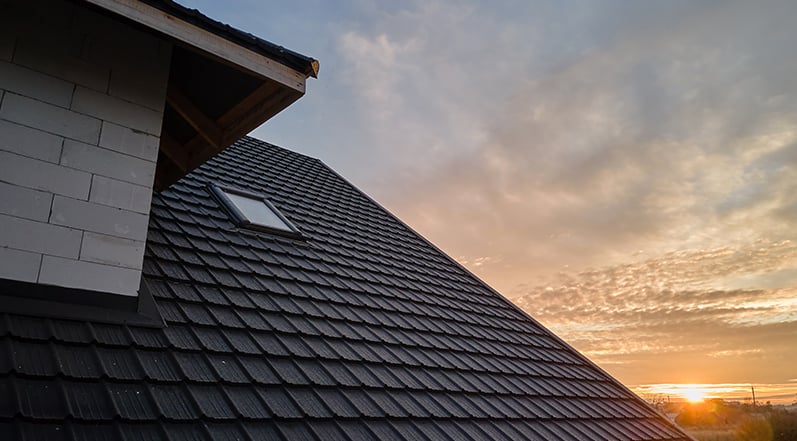
If it’s time for you to replace your roof in the Atlanta area, we’re here to help! Colony Roofers is a locally owned and operated roofing company specializing in offering the highest-quality roofs at the most affordable prices. Our team is hand selected for their integrity, experience, and work ethic, and our customer service team always goes above and beyond to ensure that you have a stress-free, simple experience no matter what your roofing needs are.
We would love to answer any questions you might have about your next roofing project or come out to offer you a free estimate. If that sounds good to you, contact us today!
 Call (678) 365-3138
Call (678) 365-3138

